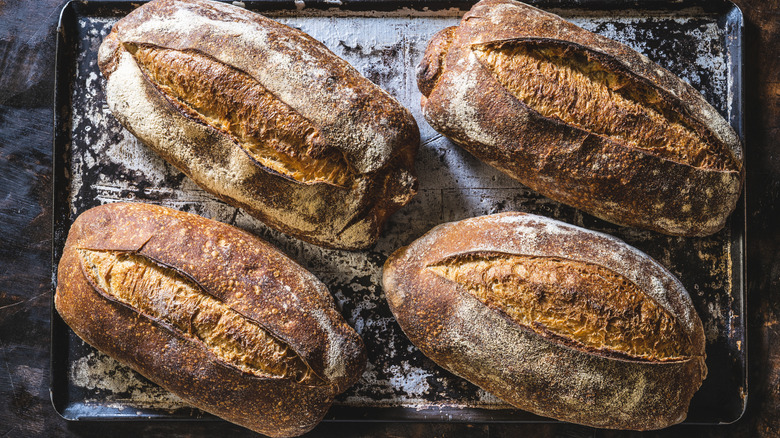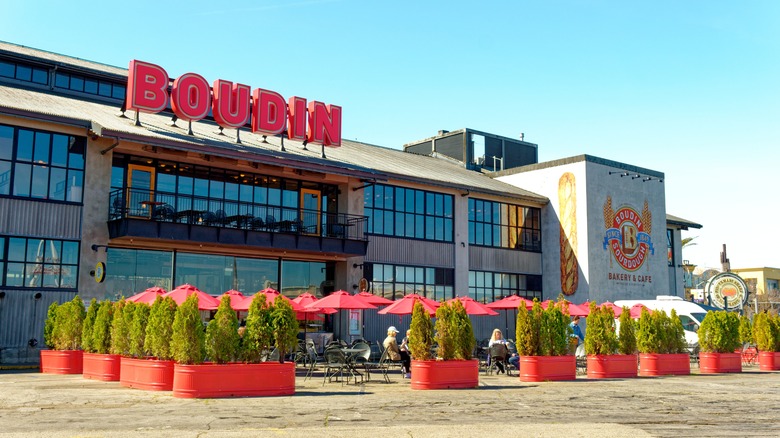The Unique Ingredient That Makes San Francisco Sourdough Different
San Francisco-style sourdough is the type that probably comes to mind when you hear the words "sourdough bread." That tangy flavor, aerated texture, and sour-sweet aroma comes from acetic acid — a byproduct of the fermentation process as active bacteria feeds on wild yeast — and sourdough's signature funkiness is even bolder and more complex in San Francisco loaves. In the 1970s, scientists discovered a bacteria called Lactobacillus sanfranciscensis, which was believed to be indigenous and exclusive to the San Francisco Bay Area. Although the bacteria has since been identified in other countries around the world, it's the same species that gives an extra bite to French and Italian country-style loaves. No one seems sure exactly why San Francisco sourdough sports such high levels of acetic acid and such dimensional, standout loaves, but that hasn't stopped fans from theorizing.
Thanks to 'Frisco's long tradition of sourdough-making, starters that have been cultivated and passed down for generations are likely a substantial contributing factor to the complexity of flavor. It could also have something to do with the city's climate, particularly the seemingly sempiternal cloud of fog. Josey Baker, co-owner of San Francisco's The Mill bakery, says it's more about the grains than it is about the acetic acid concentration. As Baker tells BBC, "Rather than flavoring from fermentation, the dominant force at work here is the grains from which each loaf of bread is made. Less of the acetic acid (think vinegar), and more of a sweet lactic acid-forward fermentation (think yogurt)."
The biggest secret ingredient to San Francisco sourdough might actually just be tradition
Sourdough entered the San Francisco foodie scene during the Gold Rush of the mid-1800s. James W. Marshall discovered gold in the 'Frisco hills in 1848, and by 1849, the population skyrocketed from 1,000 to 25,000, upsetting the market and making it nearly unaffordable for folks to eat. Enter the sourdough starter. The original starters might have been brought with settlers from the Basque Country of Northern Spain. They could turn flour into nutrient-dense bread that would nourish families through these scarce times without commercial yeast. The live culture bacteria also makes sourdough bread easier to digest and extends its shelf life, and it wasn't uncommon for the miners to literally sleep with their jars of sourdough starter to keep the bacteria warm and alive on cold nights.
Per the lore, Isidore Boudin was a master baker descended from a family of French bakers from Burgundy, and he bought a bit of one of these Basque starters from a local miner in 1849. He used it to found Boudin Bakery, which remains a San Francisco sourdough staple today and continues to use the same mother dough nearly 200 years later. Boudin Bakery remains the oldest continuing operating business in the entire city, and traditional artisanal sourdough loaves continue to be sold at many other San Francisco area bakeries like Acme Bread, Semifreddi's, and more.

